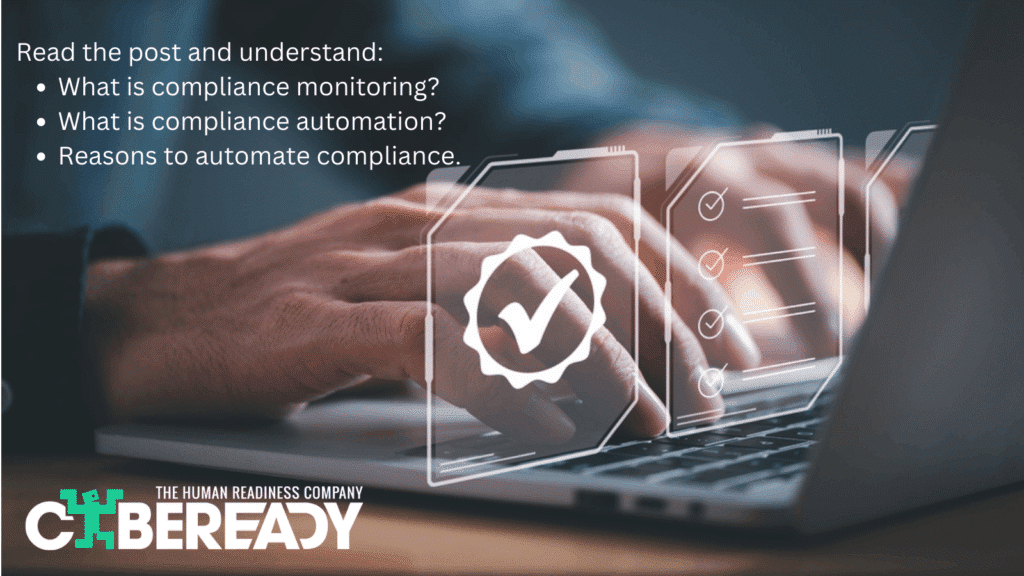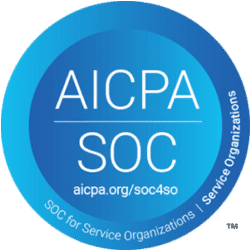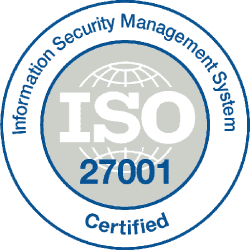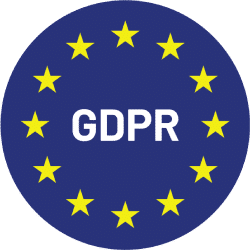What is common to big banks, pharmaceuticals, heavy industry, and the smallest online shop? They all must be compliant. The effective management and monitoring of compliance, i.e., the adherence to laws and regulations such as GDPR, PCI-DSS, HIPAA, ISO/IEC 27001, SOC 2, and others, is crucial for business success and organizational resilience in almost all fields and sectors.
Strong compliance monitoring is essential, as it is often a pre-condition to regular operations. Moreover, non-compliance can be extremely costly and cause an average of over $ 4 million in revenue losses. Furthermore, managing and monitoring compliance can be difficult and expensive, as 50% of organizations report they spend 6-10% of their revenue on compliance costs.
Since compliance monitoring can be labor-intensive and resource-draining, one solution is automating the monitoring process. In this post, we will discuss the following:
- What is compliance monitoring?
- What is compliance automation?
- Reasons to automate compliance.
- Overlooked tips when it comes to automated compliance.

What is compliance monitoring?
Compliance is the adherence to laws, rules, regulations, standards, and related policies and procedures. Compliance monitoring is the continuous and regular process of ensuring that an enterprise follows all policies and procedures required for being in full compliance. In other words, it checks that an enterprise meets its external and internal regulatory obligations.
Many authorities and regulators in countries such as the US, UK and international organizations require compliance monitoring. Some examples are the USDepartment of Treasury, the UK’s Financial Conduct Authority, and the International Organization for Standardization (ISO). All of these require a detailed compliance monitoring plan when applying for approval.
In most cases, compliance monitoring is done by the organization’s compliance teams as part of the whole compliance management system.
What is compliance automation?
Compliance automation refers to automating compliance management processes, such as compliance monitoring, using technological tools and technologies such as dedicated software, AI, etc. Such tools and technologies allow the enterprise to automate all manual processes like monitoring, auditing, reporting, testing, control analyses, corrective action planning, etc.
It is important to remember that compliance is mandatory. For example, one cannot process debit or credit cards without complying with thePCI DSS Payment Card Industry Data Security Standard.
7 Reasons to automate compliance
Here are seven main reasons for an enterprise to automate all compliance processes –
1. Improved efficiency and reduced costs
Automated systems and processes are much less labor-intensive and, therefore, more cost-effective than manual ones.
2. Decreased compliance risk
More automation means fewer mistakes and reduced risk of non-compliance damage such as fines.
3. Enhanced compliance monitoring
Constantly updated compliance data such as status, reports, and audits can be accessed and checked easily and continuously, making compliance monitoring more efficient and effective.
4. Allow compliance teams to focus on the big picture
By eliminating repetitive tasks, automation can free compliance teams to focus on what is really important and thus improve compliance monitoring effectiveness even further.
5. Augmented visibility and transparency
Enhanced and effective compliance monitoring assists you in achieving a complete view of your entire ecosystem, from internal servers to supply chain partners.
6. Better risk management
Since all relevant, up-to-date data is continuously accessible, risk management decisions can be made based on real-time data.
7. Greater collaboration and uniformity
Using automated tools that supply a real-time view of compliance status allows all stakeholders to collaborate more efficiently and helps ensure uniformity in compliance management across the enterprise.

6 overlooked tips to automate compliance monitoring
1. Consider the use case first
When automating your compliance monitoring, the first step is to consider the specific use cases relevant to your organization. This will give you a good starting point in understanding what you need to plan your strategy, choose the best and most suited compliance monitoring solution, and integrate it into your organization.
Examples of common use cases are:
- Monitoring for critical vulnerabilities and understanding the business impact.
- Identifying and addressing misconfigurations before they become business risks.
- Ensuring your compliance program supports your business services.
- Monitor HR policy requirements and onboarding risk.
- Ensuring customers‘ privacy standards are met.
2. Shortlist compliance monitoring tools on the market
Automating compliance monitoring means replacing traditional compliance management tools, such as spreadsheets, email communications, file storage systems, etc., with strong, holistic, automated tools.
There are many compliance management software solutions that automatically and continuously gather all relevant information from all across your systems, analyze it, and display it in a centralized fashion. This allows you to easily and constantly conduct effective compliance monitoring.
Make a short list of the best compliance monitoring tools and keep in mind the following –
- The best compliance solutions have automatically inherent compatibility features with relevant standards, such as:
- The Health Insurance Portability and Accountability Act (HIPAA)
- The Federal Information Security Management Act (FISMA)
- The Payment Card Industry Data Security Standard (PCI-DSS)
- The EU’s General Data Protection Regulation (GDPR)
- ISO/IEC 27001, and more.
- Make sure that the tools you examine have compatibility features with the most relevant standards for your organization.
- Considers and examine all needed features, such as:
- Connection to other tools.
- Communication, sharing, and collaboration.
- Task management.
- Data analysis.
- Progress reports.
- Risk analysis.
- Make sure the solution is holistic and covers as many aspects as possible such as data gathering, compliance monitoring, reporting, auditing, compliance training, etc.
- Consider how well each compliance monitoring solution can integrate with all the tools and systems you are currently using.
3. Communicate the new processes and procedures to staff while emphasizing the benefits of automation and training.
Introducing and implementing new processes, tools, and procedures always come with many challenges, especially when considering their execution by your employees. Thinking about the efforts needed to learn and train the implementation of new information can be daunting. Compliance monitoring is no different and comes with its own unique set of challenges, especially as many employees regard it as an obstacle to performing their tasks quickly and effectively.
Good communication is, therefore, crucial. Focus on how to effectively communicate the transfer in the best way possible. Remind employees of the many benefits of automating compliance monitoring and how it can actually remove tedious manual tasks off their shoulders, making their work much more manageable.
Explain and demonstrate how an automated compliance training platform will make the implementation process easier and smoother. Emphasize that using such a training tool improves compliance management and will actually prevent unnecessary efforts since it will make them more proficient and efficient.
Good communication can help you mobilize your employees to the process and eventually improve their work and compliance.
4. Integrate the compliance monitoring tool with other systems
Integration of the compliance monitoring tool with all your other systems is crucial both from the compliance aspect and the organization’s workflow point of view – Properly gathering all relevant data is crucial for compliance management and monitoring. You can’t achieve this if your compliance monitoring tool isn’t completely integrated with your other tools and systems. Furthermore, good integration ensures that any modifications which may result in non-compliance are flagged immediately.
Good integration with day-to-day working tools, such as Jira, Slack, and Microsoft Teams, makes compliance monitoring more effective and makes implementation and adoption much faster and smoother. Such integration means compliance teams can manage tasks more efficiently while all others can continue using the same tools they’re accustomed to.
5. Ensure you are monitoring your supply chain

One of the most overlooked aspects of compliance monitoring is the monitoring of supply chains, particularly in the case of larger organizations. Automating compliance monitoring of your entire supply chain is a great opportunity to solve this problem.
As automation makes the whole compliance monitoring process much easier, faster, and less work-intensive, ensure that it encompasses all your suppliers in the chain.
6. Utilize training tools to keep staff up to date with compliance
Any system is only as good and effective as the people using it. Many managers focus on the technical aspect of purchasing, implementing, and integrating the most advanced technological tools and lose sight of the human factor.
Compliance monitoring is no different. Be sure to utilize advanced training tools, such as an automatic smart security awareness training platform, to enhance your organization’s cybersecurity and compliance and keep staff up to date with all compliance requirements.
Manage compliance more effectively with CybeReady
Compliance monitoring is critical for the success of compliance management, as it ensures your organization is constantly compliant with the most recent and updated laws, regulations, and standards. Using advanced tools to automate compliance monitoring reduces risks and financial damage while making your organization more resilient.
CybeReady’s automated cyber security and compliance training platform changes employees‘ behavior to better cope with security breach dangers and simultaneously handles all aspects of compliance.Contact CybeReady today to learn how to improve your cross-organization compliance.







![The PCI Compliance Checklist for InfoSec Pros [XLS Download]](https://cybeready.com/wp-content/uploads/Picture10-1.png)








